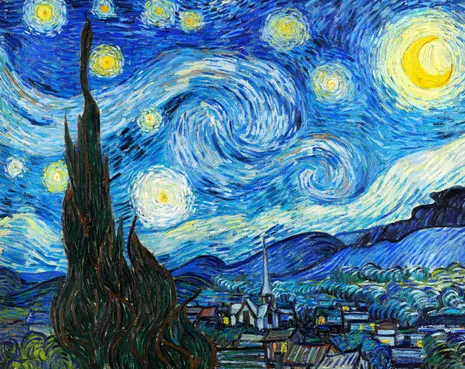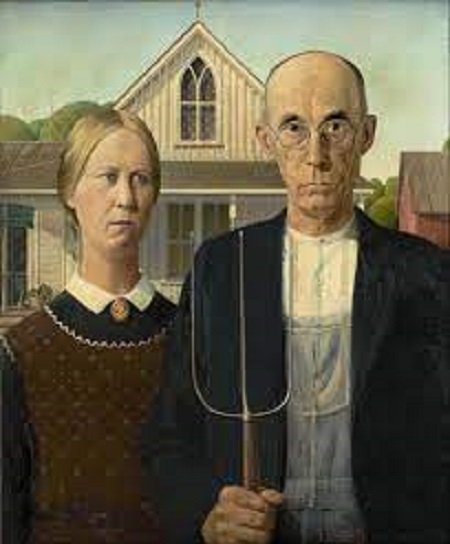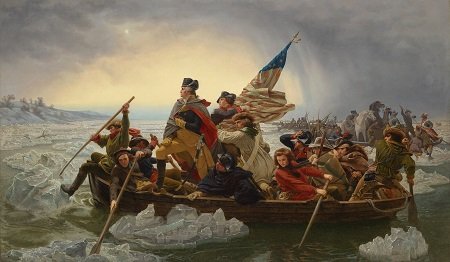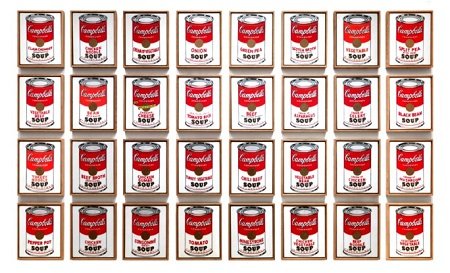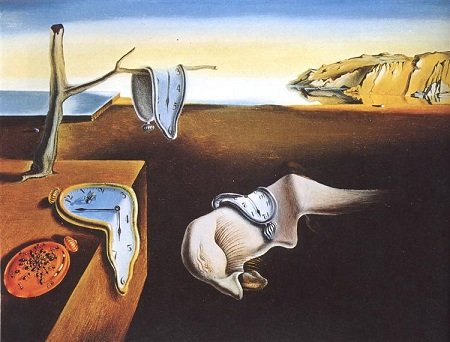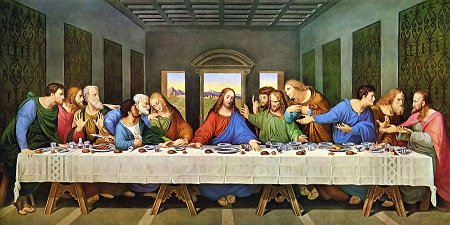These top 10 most famous works of art in US history stand as a testament to the power of creativity and the enduring impact of art. From evoking emotions and challenging conventions to reflecting societal changes and preserving historical moments, these masterpieces have shaped the cultural landscape of the United States. Through their beauty, innovation, and significance, they continue to inspire and captivate audiences, ensuring their timeless place in the annals of art history.
The Starry Night by Vincent Gogh
Vincent van Gogh’s masterpiece, “The Starry Night,” is a captivating portrayal of a night sky ablaze with swirling stars and a luminous crescent moon. Painted in 1889 during his time at an asylum in Saint-Rémy, France, the artwork reflects the artist’s tumultuous inner emotions and his profound connection to nature. Van Gogh’s bold brushstrokes and vibrant colors create a sense of movement and intensity, while the dark silhouette of a cypress tree adds a touch of melancholy. “The Starry Night” has become an iconic representation of van Gogh’s unique style and has left an indelible mark on art history. Housed in the Museum of Modern Art (MoMA) in New York City, it continues to mesmerize viewers with its emotional depth and the artist’s ability to capture the ethereal beauty of the night sky. It stands as a testament to van Gogh’s enduring legacy as one of the most influential painters of all time.
American Gothic by Grant Wood
“American Gothic” by Grant Wood is an iconic painting that has come to symbolize the American spirit and the rural heartland of the United States. Created in 1930, the artwork depicts a stern-faced farmer and his daughter standing in front of a simple farmhouse, both adorned in traditional clothing. Wood’s meticulous attention to detail and precise lines lend the painting a sense of precision and realism. The composition evokes a sense of stoicism and steadfastness, embodying the values often associated with rural America. “American Gothic” has become one of the most recognized and parodied works of art in American history, transcending its original portrayal to become a cultural symbol. Currently housed in the Art Institute of Chicago, it continues to resonate with viewers, offering a glimpse into the essence of American identity and the enduring legacy of Grant Wood as a quintessentially American artist.
Washington Crossing the Delaware
“Washington Crossing the Delaware” by Emanuel Leutze immortalizes a pivotal moment during the American Revolution. Painted in 1851, the artwork depicts General George Washington leading his troops across the icy Delaware River on Christmas night in 1776. With dramatic lighting and a sense of heroic determination, Leutze captures the essence of American resilience and the spirit of freedom. The painting has become an enduring symbol of American patriotism and courage in the face of adversity. Housed in the Metropolitan Museum of Art in New York City, “Washington Crossing Delaware” continues to inspire and remind us of the sacrifices made by the founding fathers in the pursuit of liberty. It stands as a powerful testament to the indomitable spirit that shaped the United States of America.
Campbell’s Soup Cans by Andy Warhol
Andy Warhol’s “Campbell’s Soup Cans” is an iconic artwork that revolutionized the art world and redefined the concept of contemporary art. Created in 1962, the piece consists of 32 canvases, each featuring a different variety of Campbell’s Soup. By elevating mundane commercial objects to the realm of high art, Warhol challenged traditional notions of what could be considered art. The repetition and uniformity of the soup cans reflect the mass production and consumer culture of the time. “Campbell’s Soup Cans” became a defining work of the Pop Art movement, blurring the boundaries between art, commerce, and popular culture. It propelled Warhol to international fame and established him as a leading figure in the art world. Today, the artwork is showcased in numerous museums around the world, serving as a symbol of Warhol’s artistic vision and his exploration of the intersection between art and everyday life.
See also: 20 Mind-blowing US History Facts
Whistler’s Mother by James Whistler
“Whistler’s Mother,” also known as “Arrangement in Grey and Black No. 1,” is a renowned painting by James McNeill Whistler. Created in 1871, this iconic portrait features the artist’s mother, Anna McNeill Whistler, seated in a simple black dress against a neutral background. The painting’s composition exudes a serene and contemplative atmosphere, capturing the essence of a timeless maternal figure. Whistler’s attention to detail and his masterful use of shades of gray and black create a harmonious balance within the painting. “Whistler’s Mother” has achieved global recognition, showcasing Whistler’s ability to capture the depth of human emotion and the dignity of the subject. The painting has been exhibited in prominent museums worldwide and continues to captivate viewers with its quiet power and evocative portrayal of a universal maternal bond. It stands as a testament to Whistler’s artistic prowess and his enduring contribution to the world of portraiture.
Guernica” by Pablo Picasso
“Guernica” by Pablo Picasso is an indelible masterpiece that stands as a poignant testament to the horrors of war. Created in 1937, the artwork was Picasso’s response to the devastating bombing of the town of Guernica during the Spanish Civil War. Through its monumental size and expressive imagery, “Guernica” captures the anguish, suffering, and chaos of the civilian population caught in the crossfire of conflict. The fractured and distorted figures, the agonized horse, and the stark monochromatic palette convey a sense of despair and outrage. Symbolism abounds, with symbols of death, destruction, and resistance woven throughout the composition. Housed in the Museo Reina Sofia in Madrid, “Guernica” has become an enduring symbol of artistic protest against the atrocities of war and a reminder of the consequences of violence. Its impact transcends time and place, serving as a universal call for peace and compassion.
The Persistence of Memory by Dalí
“The Persistence of Memory” by Salvador Dalí is a mesmerizing artwork that has captivated audiences since its creation in 1931. This surrealist masterpiece presents a dreamlike landscape where time and reality seem to melt away. The iconic melting clocks draped over surreal objects create a sense of distortion and ambiguity. The barren landscape and the solitary figure in the painting evoke a feeling of timelessness and introspection. Dalí’s meticulous attention to detail and precise brushwork contribute to the meticulous rendering of this enigmatic scene. “The Persistence of Memory” challenges conventional notions of time and invites viewers to explore the depths of their subconscious minds. Housed in the Museum of Modern Art (MoMA) in New York City, this artwork continues to intrigue and provoke contemplation, embodying Dalí’s profound impact on the surrealist movement and his enduring legacy as one of the most celebrated artists of the 20th century.
Freedom from Want by Norman Rockwell
“Freedom from Want” by Norman Rockwell is a timeless painting that captures the essence of American values and the spirit of Thanksgiving. Created in 1943 as part of Rockwell’s Four Freedoms series, this iconic artwork depicts a multigenerational family gathered around a table, eagerly anticipating a bountiful meal. The painting exudes warmth, harmony, and a sense of togetherness, embodying the ideals of abundance, gratitude, and familial love. Rockwell’s meticulous attention to detail and his ability to capture human expressions make the scene come alive, inviting viewers to partake in the festive atmosphere. “Freedom from Want” has become an enduring symbol of American culture, representing cherished traditions and the importance of family and community. It holds a special place in the hearts of many and continues to evoke feelings of nostalgia and a longing for the cherished moments of togetherness that define the American holiday season.
See also: 10 Most Important Supreme Court Cases in US History
Mural by Jackson Pollock
“Mural” by Jackson Pollock is a monumental artwork that showcases the artist’s innovative and revolutionary approach to abstract expressionism. Created in 1943, this large-scale painting stands over 8 feet tall and spans across a wide canvas. The composition features intricate and energetic layers of swirling lines, vibrant colors, and organic shapes. Pollock’s signature drip painting technique is on full display, as he poured, dripped, and splattered paint onto the canvas, allowing his subconscious and spontaneous gestures to guide the creation process. “Mural” represents a pivotal moment in Pollock’s career and the development of abstract expressionism as a major movement in American art. The artwork’s dynamic and chaotic nature invites viewers to immerse themselves in the artist’s emotional and gestural exploration. Housed in the University of Iowa Museum of Art, “Mural” is a testament to Pollock’s influential legacy and his groundbreaking contribution to the world of modern art.
The Last Supper by Leonardo da Vinci
“Mural” by Jackson Pollock is a monumental artwork that showcases the artist’s innovative and revolutionary approach to abstract expressionism. Created in 1943, this large-scale painting stands over 8 feet tall and spans across a wide canvas. The composition features intricate and energetic layers of swirling lines, vibrant colors, and organic shapes. Pollock’s signature drip painting technique is on full display, as he poured, dripped, and splattered paint onto the canvas, allowing his subconscious and spontaneous gestures to guide the creation process. “Mural” represents a pivotal moment in Pollock’s career and the development of abstract expressionism as a major movement in American art. The artwork’s dynamic and chaotic nature invites viewers to immerse themselves in the artist’s emotional and gestural exploration. Housed in the University of Iowa Museum of Art, “Mural” is a testament to Pollock’s influential legacy and his groundbreaking contribution to the world of modern art.
Conclusion
These top 10 most famous works of art in US history stand as a testament to the power of creativity and the enduring impact of art. From evoking emotions and challenging conventions to reflecting societal changes and preserving historical moments, these masterpieces have shaped the cultural landscape of the United States. Through their beauty, innovation, and significance, they continue to inspire and captivate audiences, ensuring their timeless place in the annals of art history.
